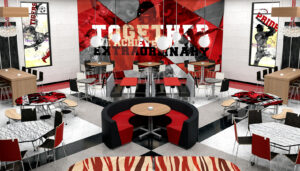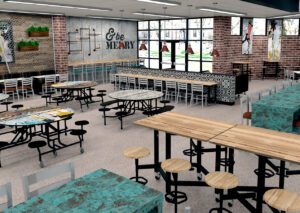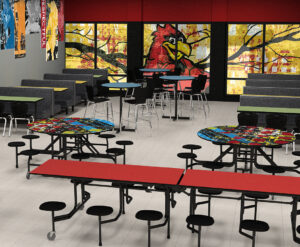Our Tables Have Great Legs to Stand On
Greg Kohler, Engineering and Warranty Manager – Palmer Hamilton

Safety
The first and most uncompromisable priority in a Palmer Hamilton table design is safety. Designing safe products for K-12 comes with some unique challenges, as the tables are often moved and treated rougher than other environments while their primary users, children, are more accident-prone than adults and therefore more susceptible to injury.
In response to these risk factors, all Palmer Hamilton tables come with several safety features to protect both the products and the people who use them. Palmer Hamilton tables aren’t just nice to look at; they’re built to last. We offer industry-leading durability with a 15-year warranty to give schools confidence in their investments’ longevity.
To protect the students and staff who interact with our products, we follow table construction guidelines and certain safety tests that have been cemented as industry standards. However, we also incorporate our own experience in K-12 to identify potential risks and add additional safety features. This includes locking mechanisms to ensure tables are stabilized during use and storage, outriggers to allow them to be moved and stored safely and inherent features to prevent pinch points.
Functionality
Defining the function(s) is the first step we take when coming up with a new product. Developing a novel table model is always exciting, but doing so without first identifying a corresponding need is essentially a waste of time.
In addition to understanding the market to find that need, companies have
After identifying what the function is for a new table, designers need to anticipate how it will be used. People are increasingly placing value in ease of use for most products, and that rings true for K-12 furniture. Any necessary setup, takedown or movement to achieve the desired function should be easily done without complicated instructions.
Efficiency
The final critical priority in developing a new table is efficiency. Adding a new product means more work to the production line, which makes simple assembly processes critical to the operation’s sustainability. Efficiency on the floor can also be achieved by consolidating existing products. In 2023, the
Palmer Hamilton team reviewed our line of mobile cafeteria tables with an assessment of how the offerings fulfilled different functions. We found that the number of complex assemblies could be reduced by 50 percent while still covering all the needs schools may have. This reduction eliminated redundancies in the catalog and streamlined the production process to be more economical.

